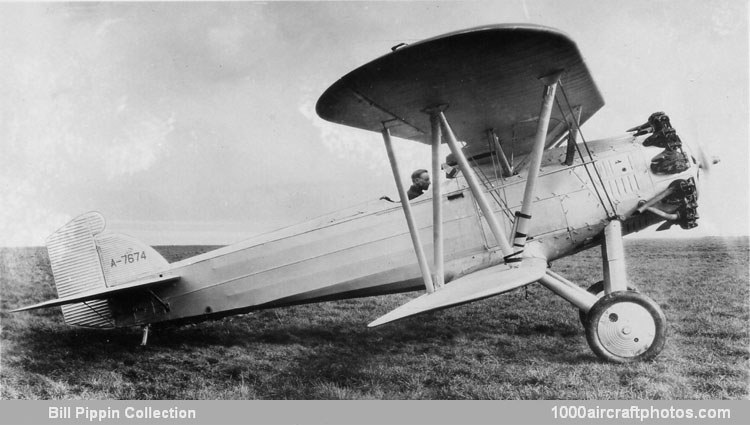The XF3B-1 could also be fitted as a seaplane, but instead of using the twin float arrangement of the earlier FBs it had a single float under the fuselage and two wing tip floats in the manner of the standard Navy observation seaplanes that could be catapulted from battleships. Navy interest in this float arrangement for fighters is reflected by the fact that the earlier Vought FU-1 and the contemporary Eberhart XFG-1, Wright XF3W-1, and Curtiss XF7C-1 could also be fitted with single floats. However, these five machines marked the end of Navy interest in seaplane fighters until a single experiment with twin floats on a Grumman F4F-3 took place in 1942.
Powered by a 425 hp Pratt & Whitney R-1340 Wasp radial engine, the single-seat shipboard or seaplane fighter XF3B-1 first flew on March 2, 1927, but did not carry either civil or military markings when tested by the Navy other than the Army type tail stripes developed by Boeing, and the Boeing Totem (also known as Boeing Bug) as Company insignia on the rear fuselage.
The XF3B-1 did not show a sufficient improvement over the F2B-1 to justify production as a new fighter type, so it was returned to the factory, still as Boeing property, where it was rebuilt into a new design: Boeing Model 77. Only the prototype in its two forms could be fitted as a seaplane. The corrugated metal rudder in the contour shown was peculiar to the rebuilt prototype. Armament consisted of two 0.30 in (7.62 mm) machine guns and five 25 lb (11.3 kg) bombs. The prototype was purchased by the Navy under BuNo. A-7674 as an additional article on a contract for 73 production Model 77s that were designated F3B-1."
